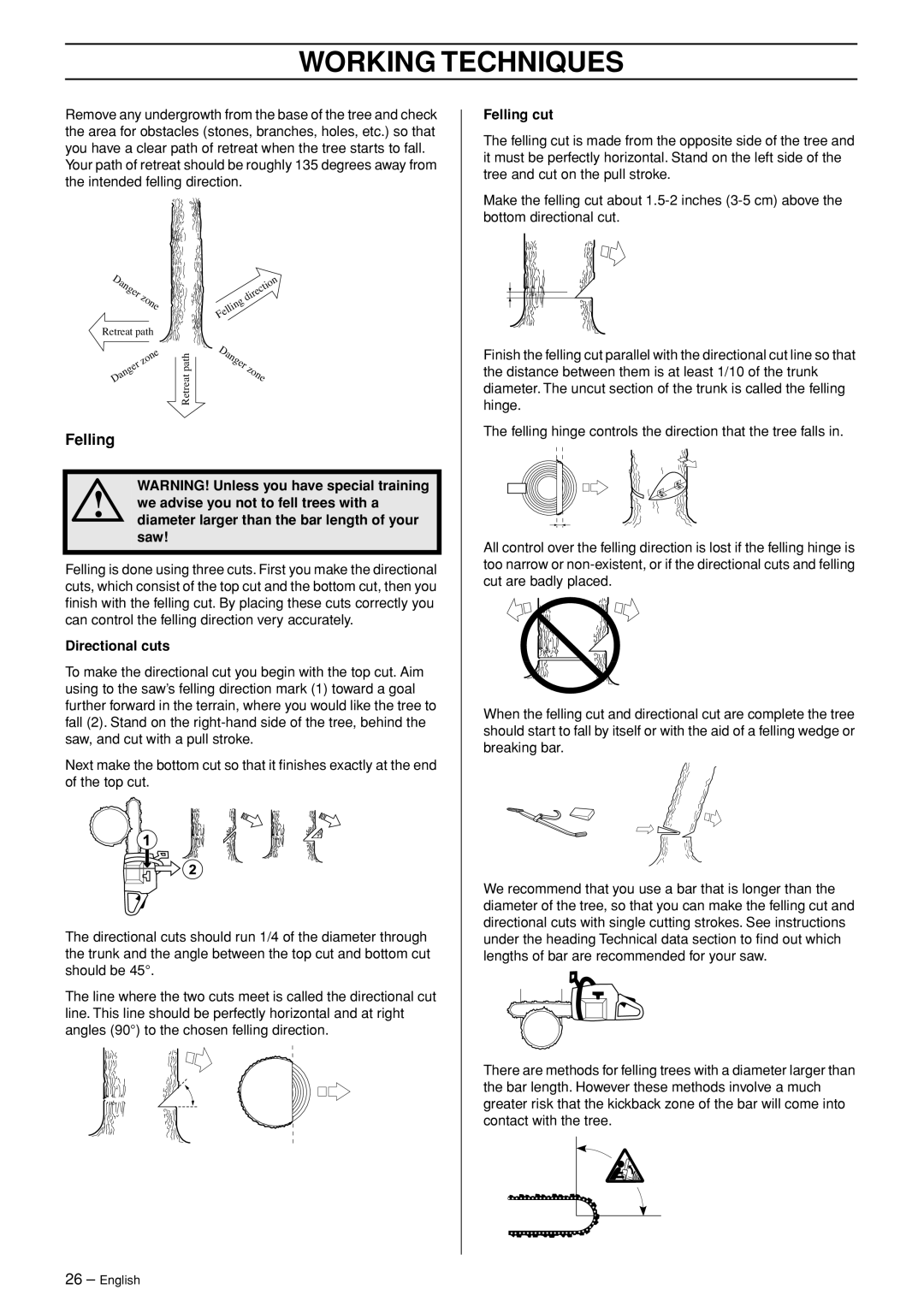445 EPA II, 445e EPA II, 450e EPA II specifications
Husqvarna is a name synonymous with power and durability, especially when it comes to its line of chainsaws like the Husqvarna 445 EPA II, 445e EPA II, and 450e EPA II. These models combine advanced technology and ergonomic design to fulfill the needs of both professional users and homeowners.The Husqvarna 445 EPA II chainsaw is designed for versatility and ease of use. It boasts a 45.7cc engine, providing a balance of power and weight ideal for various cutting tasks. The chainsaw features Husqvarna’s X-Torq engine technology, which reduces emissions and improves fuel efficiency. This means less downtime for refueling and a smaller ecological footprint, making it environmentally friendly. Additionally, the LowVib system minimizes vibration, which translates to reduced user fatigue over long periods of use.
The 445e EPA II takes similar principles and enhances them with increased efficiency and usability. This model includes the Air Injection system, which helps filter out larger dust and debris particles before reaching the air filter, ensuring consistent performance and a longer lifespan for the machine. Its lightweight design makes it easier to maneuver while the front handle is ergonomically shaped for a secure grip. The easy-start feature allows users to get going quickly with minimal effort.
Moving up the line, the Husqvarna 450e EPA II offers more power, featuring a slightly larger engine and an improved cutting capacity. This model is perfect for heavy-duty tasks, from felling trees to cutting firewood. Like its predecessors, it employs X-Torq engine technology and also includes the Quick Release Air Filter, making maintenance easier and faster. The robust design and advanced security features—such as the inertia-activated chain brake—ensure safe operation even under challenging conditions.
Overall, the Husqvarna 445 EPA II, 445e EPA II, and 450e EPA II chainsaws represent a commitment to safety, efficiency, and user comfort. The integration of modern technological features, coupled with Husqvarna's reputation for quality workmanship, makes these chainsaws ideal choices for anyone looking to tackle a range of outdoor cutting applications with confidence.

